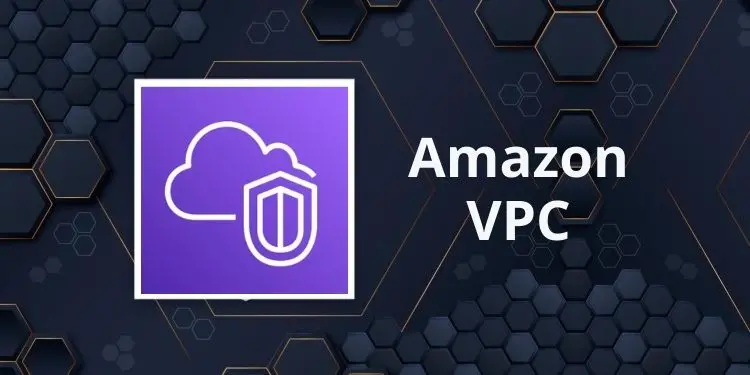We use cookies to personalise site content, social media features and to analyse our traffic. We also share information about your use of this site with our advertising and social media partners.
Posted by - Nirmala devi -
on - Oct 8 -
Filed in - Technology -
-
362 Views - 0 Comments - 0 Likes - 0 Reviews

In the modern cloud computing landscape, security, flexibility, and control over network resources are paramount. Amazon Virtual Private Cloud (VPC) allows organizations to create isolated, private networks within the AWS ecosystem, enabling them to securely deploy applications and services. With Amazon VPC, businesses can define their network architecture, control IP address ranges, configure subnets, and set up routing rules to meet specific operational requirements. Understanding how VPC works is critical for cloud architects, developers, and IT professionals who want to optimize cloud resources efficiently.
One service that enables customers to construct a logically isolated area of the AWS cloud is Amazon VPC. Within a VPC, users can launch AWS resources, such as EC2 instances and databases, in a secure and controlled environment. This isolation ensures that network traffic is segmented from other AWS tenants, providing enhanced security and performance. VPCs can be customized to match an organization’s network topology, including the choice of IP address ranges, subnets, and routing configurations.
VPCs also allow integration with on-premises networks via VPN or AWS Direct Connect, enabling hybrid cloud deployments. This makes it possible for organizations to extend their existing IT infrastructure securely into the cloud while maintaining operational control over sensitive data and applications. Training through a Training Institute in Chennai can help learners gain hands-on exposure to these setups.
Subnets
Subnets are subdivisions of a VPC's IP address range, used to organize and isolate resources. They can be either public, with direct access to the internet, or private, shielded from external traffic. Subnets help structure network traffic and enforce security policies across different resources.
Route Tables
Route tables control how traffic is directed within the VPC and to external networks. Proper configuration ensures efficient routing between subnets and internet gateways, providing both connectivity and security.
Internet Gateways
Internet gateways allow public-facing resources, such as web servers, to communicate with the internet while maintaining the security of private resources within the VPC.
Security Groups and Network ACLs
Security groups regulate incoming and outgoing traffic at the instance level, functioning as virtual firewalls. By controlling traffic at the subnet level, network ACLs offer an extra degree of protection and guarantee a strong defensive system for delicate workloads.
Elastic IPs and NAT Gateways
NAT gateways and elastic IP addresses allow resources in private subnets to connect to the internet for communication or updates without exposing the entire network.
Enhanced Security
By giving businesses fine-grained control over network traffic, Amazon VPC helps them safeguard confidential information and adhere to legal requirements. Separating responsibilities and putting strict security policies in place can help businesses lower the risk of unlawful access and cyberattacks.
Flexibility and Customization
VPCs allow users to design networks tailored to their application needs. This includes defining IP address ranges, creating subnets, configuring route tables, and setting firewall rules. Organizations can create multiple VPCs for different environments, such as development, testing, and production, providing operational flexibility.
Scalability
Amazon VPC supports scaling of resources seamlessly within isolated networks. Businesses can launch new instances, expand subnets, or integrate additional services without disrupting existing network configurations.
Cost-Effective Networking
By using VPCs, companies can optimize network resources efficiently and reduce operational costs. Routing policies, private subnets, and elastic IPs allow organizations to balance performance with cost-effectiveness.
Learning these techniques through AWS Training in Chennai provides hands-on experience, enabling professionals to design cost-efficient cloud networks while mastering best practices in AWS.
Hosting Web Applications
Public-facing web servers can be placed in public subnets with internet gateways, while backend databases remain in private subnets, ensuring both accessibility and security.
Hybrid Cloud Architectures
Businesses can securely connect on-premises networks to AWS using VPN or Direct Connect, creating a hybrid environment that leverages cloud scalability while maintaining local control.
Data Security and Compliance
VPCs are ideal for workloads requiring strict compliance, such as financial or healthcare applications, because they allow full control over network security and traffic monitoring.
Disaster Recovery and Backup
Organizations can configure multiple VPCs across regions to provide reliable disaster recovery solutions. Private networking ensures that backup operations are secure and efficient.
Plan IP Addressing Carefully
Allocate sufficient IP ranges for each subnet to avoid conflicts as your network scales.
Segment Public and Private Resources
Separate internet-facing services from internal resources to enhance security.
Implement Security Groups and ACLs Strategically
Use layered security rules to control access at both the instance and subnet levels.
Use VPC Peering and Endpoints
Establish VPC peering or private endpoints for secure communication between VPCs and AWS services without exposing traffic to the public internet.
Regular Monitoring and Auditing
Continuously monitor traffic, security logs, and configuration changes to maintain network health and compliance.
Amazon VPC is a cornerstone for secure and scalable cloud architecture. By enabling organizations to build isolated, customizable networks within AWS, VPC empowers businesses to manage resources efficiently while maintaining control over security and traffic flow. From hosting web applications to implementing hybrid cloud solutions, VPC provides the flexibility and protection modern enterprises require.
Understanding and applying VPC best practices ensures optimal performance, cost efficiency, and regulatory compliance. Whether you are a cloud architect, developer, or IT professional, mastering Amazon VPC is essential for designing robust, scalable, and secure cloud infrastructures that meet today’s demanding business requirements.
Also Check: What Are the Best Practices for Deploying Scalable Applications on AWS?

“To assist disaster survivors by providing a source for them to come together in time of need, to aid in the listing of events, information and other forms of assistance, and continuing support through the recovery process.”
Share this page with your family and friends.